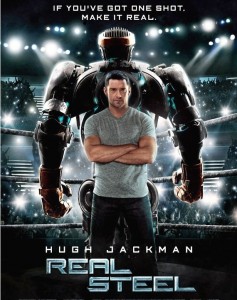 Okay, when I first watched the movie Real Steel, it was with the family and I truly enjoyed it for its simple premise and fantastic visual effects. Campy? Corny? Predictable? Yes on all counts. Call it what you like, but the 2011 film by DreamWorks Pictures staring Hugh Jackman and Dakota Goyo is a fun watch. Hey it’s about fighting robots!
Okay, when I first watched the movie Real Steel, it was with the family and I truly enjoyed it for its simple premise and fantastic visual effects. Campy? Corny? Predictable? Yes on all counts. Call it what you like, but the 2011 film by DreamWorks Pictures staring Hugh Jackman and Dakota Goyo is a fun watch. Hey it’s about fighting robots!
Remember that game Rock ‘Em Sock ‘Em Robots when we were kids? My brothers and I would push Red Rocker and Blue Bomber to their limits until the head of one robot popped up. We played it so much the springs broke. THAT is the same delight I got while watching the movie Real Steel. It made me feel like a kid. I didn’t need a lot of the back-story or moral issues. I just needed a reason to see robots duke it out.
In case you haven’t watched it yet, Real Steel is a futuristic look at the sport of boxing through the technology of robots. Jackman plays the part of retired boxer Charlie Kenton. He is a down on his luck operator of a robot fighter. While barely being able to make a living between bouts, he learns that an ex girlfriend has died and left him with a son. This is the heart felt part of the film and the tie that links a bitter yet determined little boy to an irresponsible father who is only looking toward the next dollar. But the real star of this film turns out to be the CG generated robot Atom. Go figure.
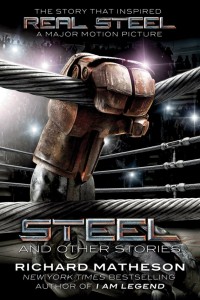 Always fascinated by the background of a story (the origin of the story, not the background of the characters), I was led to believe Real Steel was loosely based on the short story titled Steel by the legendary writer Richard Matheson. Appearing in several publications, the story found itself in the pages of Steel and Other Stories, a special 2011 collection from Tor Publishing as part of a marketing tie-in with the film. After reading this original premise, it quickly became evident that Hollywood took many artistic liberties in both characters and plot.
Always fascinated by the background of a story (the origin of the story, not the background of the characters), I was led to believe Real Steel was loosely based on the short story titled Steel by the legendary writer Richard Matheson. Appearing in several publications, the story found itself in the pages of Steel and Other Stories, a special 2011 collection from Tor Publishing as part of a marketing tie-in with the film. After reading this original premise, it quickly became evident that Hollywood took many artistic liberties in both characters and plot.
 Matheson’s story Steel was first published in the May 1956 issue of The Magazine of Fantasy and Science Fiction. In this original plot, “Steel” Kelly and his mechanic Pole travel to a small town with their dilapidated fighting robot named “Battling Maxo” in hopes of earning enough money to buy some replacement parts. Ex fighter Kelly has more confidence in their one-time contender than the knowledgeable Pole who sees the robot as scrap parts at best. The character development in the story is strong from the start (yes, I look for this in “written” works). Their constant counter banter gives the reader a clear indication of the duo’s close relationship even though they both see their future in different lights. But when Maxo’s parts inevitably fail just before the bout, Kelly is left with no other choice but to take the robot’s place in the fight.
Matheson’s story Steel was first published in the May 1956 issue of The Magazine of Fantasy and Science Fiction. In this original plot, “Steel” Kelly and his mechanic Pole travel to a small town with their dilapidated fighting robot named “Battling Maxo” in hopes of earning enough money to buy some replacement parts. Ex fighter Kelly has more confidence in their one-time contender than the knowledgeable Pole who sees the robot as scrap parts at best. The character development in the story is strong from the start (yes, I look for this in “written” works). Their constant counter banter gives the reader a clear indication of the duo’s close relationship even though they both see their future in different lights. But when Maxo’s parts inevitably fail just before the bout, Kelly is left with no other choice but to take the robot’s place in the fight.
I understand the need to make a few adjustments when transferring a story from paper to film, but in this case, there is very little left from the original as it appears on the big screen. Robots have replaced humans in the boxing ring. The main characters are struggling financially and representative of the ultimate underdog. And this is where the comparison ends. The term “loosely based on” is more than appropriate in Real Steel when referring to Steel. Creating a full length feature film from a short story takes a lot of creative licenses, but in this case the original is completely lost.
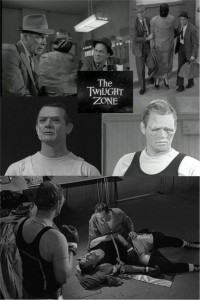 But not all cinematic references need to be so drastic. Real Steel is not the first rendition of the Matheson story. On October 4, 1963, The Twilight Zone television series aired an episode called “Steel.” In this version, the script followed the original story with precise accuracy. Granted this version was tightly fit into a half hour program, but at least it stayed true to the story. The fact that the lead character “Steel” Kelly was played by Academy Award winning actor Lee Marvin didn’t hurt either.
But not all cinematic references need to be so drastic. Real Steel is not the first rendition of the Matheson story. On October 4, 1963, The Twilight Zone television series aired an episode called “Steel.” In this version, the script followed the original story with precise accuracy. Granted this version was tightly fit into a half hour program, but at least it stayed true to the story. The fact that the lead character “Steel” Kelly was played by Academy Award winning actor Lee Marvin didn’t hurt either.
Okay, all three interpretations have their faults. The feature film is a bit campy and over the top. The television episode is quite dated and predictable while the original short story was too short and only gave the reader a small glimpse into the future. But that doesn’t mean all of them do not have some good qualities and we can’t enjoy them anyway. Again, they’re about fighting robots!

It’s too bad we can’t take the best of all three adaptations and combine them for the perfect product. Then again, maybe we can. Perhaps take the Twilight Zone’s dedication to the story, the visual magic abilities and feature length of the film, and the brilliant storyline from the original (but with more back story and/or what happens next to the Kelly character) and we might have the perfect combination.
This article started out being a review of the movie. Then it turned into a research project on the origins of the story. Eventually, this kind of morphed into an analysis of the various versions and one can only wonder what the next adaptation will look like. Maybe Maxo will KO Atom to win his role back? In any case, as long as we have fighting robots, all is good.



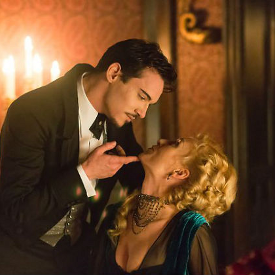
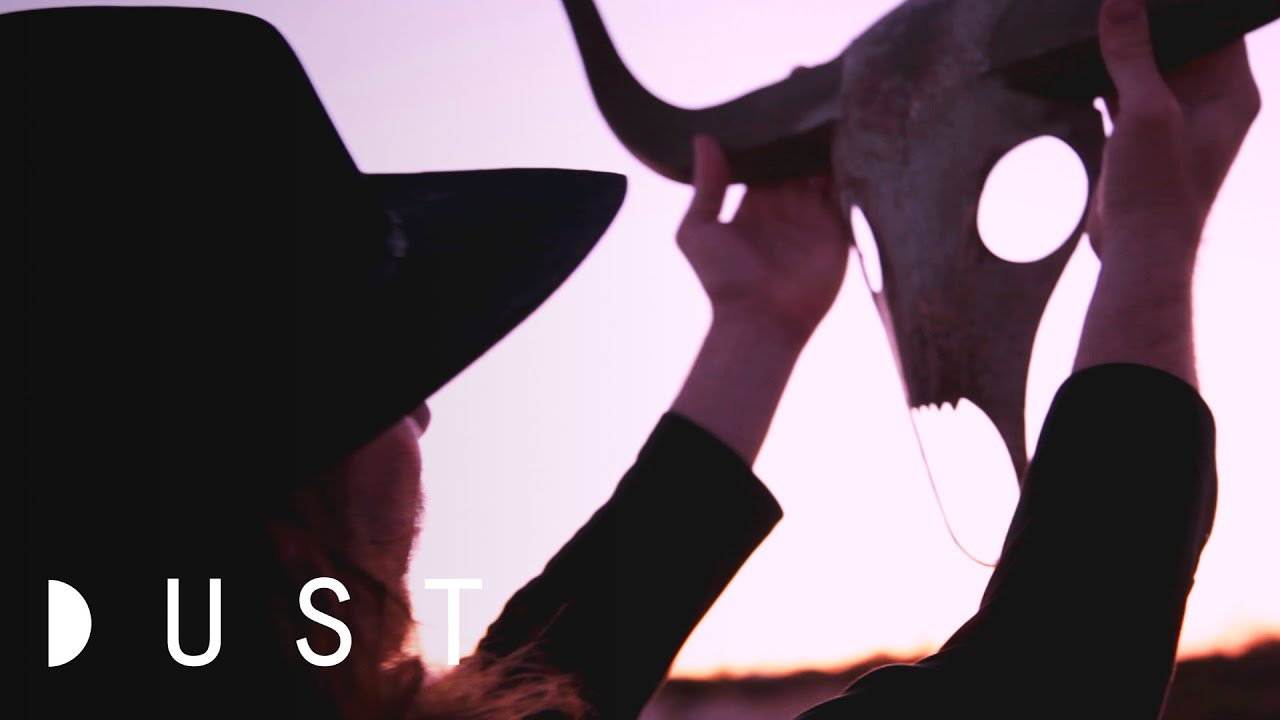





Recent Comments